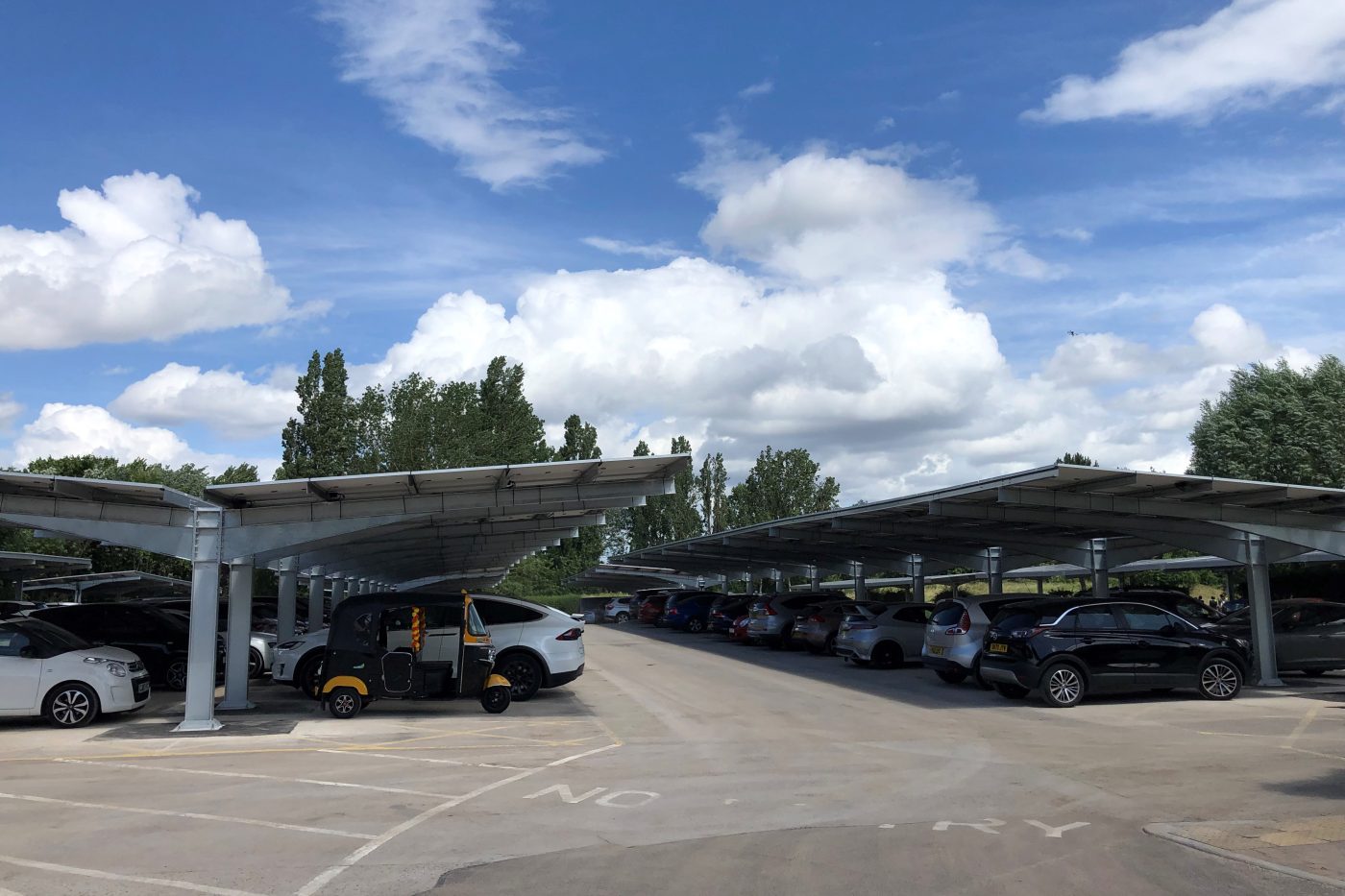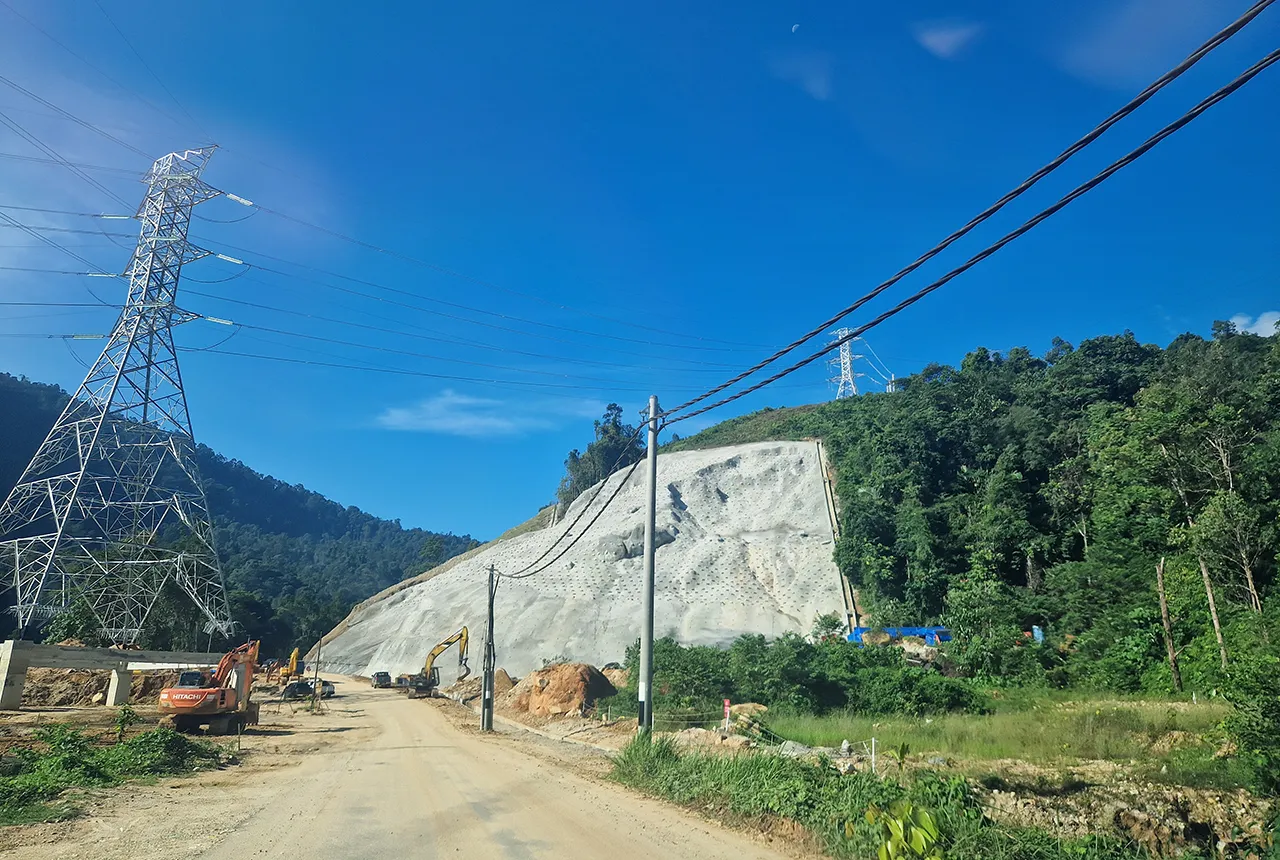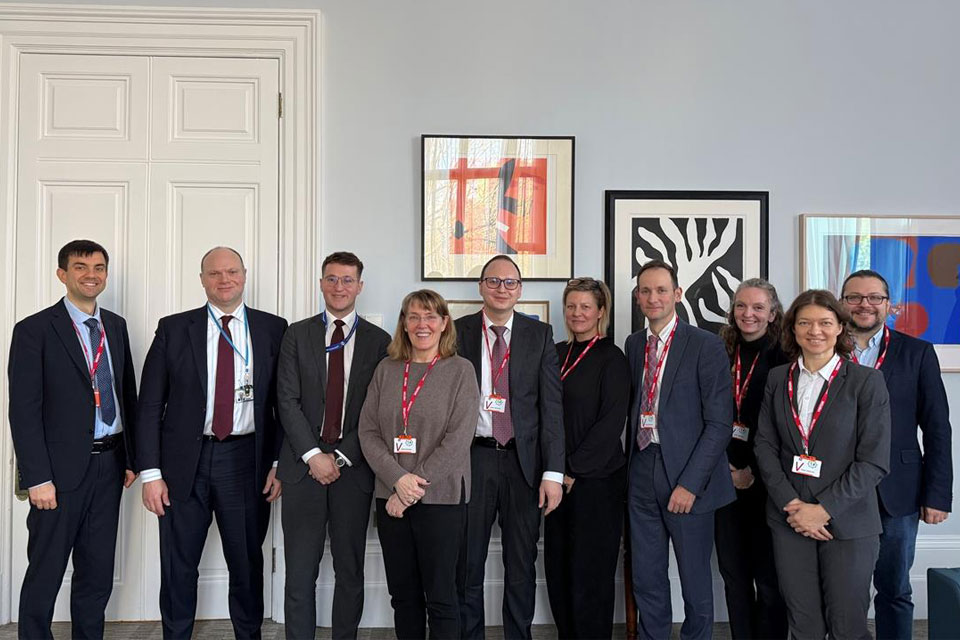Work complete on 1000 solar panels at BGS
More than 1000 energy-saving solar panels have been installed at BGS's headquarters in Keyworth, Nottinghamshire.
07/12/2022 By BGS Press
The new solar car port array in the 3980 m2 car park, which has been installed in the BGS grounds just off Nicker Hill in Keyworth, was approved by Rushcliffe Borough Council in 2020. It follows additional work approved by Rushcliffe Borough Council to install more than 1751 solar panels on the site’s National Geological Repository, which is home to the largest collection of rock core samples in the UK.
Solar panels are now in place on a 3100 m2 area of the car port’s roof and are set to generate 589 165 kwh of electricity annually, saving an estimated 305 776 kg of carbon each year. They are designed to boost energy efficiency and offset an increase in electrical usage, which is required in the organisation’s transition away from burning fossil fuels. The output generated at the port will be around 469.2 kWp (kilowatts peak) and 100 per cent of the electricity will be used on site. The car port is expected to provide a significant proportion of the energy needs for the site for at least 25 years, significantly reducing carbon dioxide (CO2) emissions.
BGS accessed the Public Sector Decarbonisation Scheme to install its solar car ports. The work forms part of BGS’s new environmental sustainability strategy, which aims to achieve zero carbon by 2040 across three core areas of the organisation: its estates, working practices and business travel.
As a leading research organisation, we know that the work we undertake and how we support it has an impact on the environment. We’re working very hard to understand this impact so that we can minimise our footprint and transition to being a more sustainable organisation.
We’re lucky to have a headquarters based in such a beautiful area of the East Midlands, so we’re very pleased to be installing the most environmentally friendly modern technologies on our sites.
Generating our own electricity via solar energy means that, as an organisation, we’ll be emitting less CO2 into the atmosphere, reducing our carbon footprint and increasing our sustainability credentials.’
Daniel Crow, BGS Estates Manager.
BGS provides independent geoscientific data, information and knowledge to help the UK manage its natural resources and respond to environmental change. Its work contributes to finding sustainable solutions that will help the UK to reduce its carbon footprint and safeguard the planet.
Work has already begun at the Keyworth site to increase the number of trees and shrubs, reduce grass cutting and implement new meadow areas and orchards to encourage wildlife. Further works are planned for the coming months.
We found the Public Sector Decarbonisation Scheme easy and friendly to use and we’re now looking forward to carrying out further exciting works in our energy transition, including ground source heating, thermal property improvement and use of modern controls.
Daniel Crow, BGS Estates Manager.
Relative topics
For media enquiries please contact Hannah Pole, BGS press office:
hapo@bgs.ac.uk | 07565297132
British Geological Survey (BGS)
The British Geological Survey (BGS) is a world-leading applied geoscience research centre that is part of UK Research and Innovation (UKRI) and affiliated to the Natural Environment Research Council (NERC). The BGS works with more than 150 private sector organisations, has close links to 40 universities and sponsors about 100 PhD students each year. Please see www.bgs.ac.uk.
Related news

BGS awarded funding to support Malaysia’s climate resilience plan
17/12/2025
The project, funded by the Foreign, Commonwealth & Development Office, will focus on minimising economic and social impacts from rainfall-induced landslides.

New geological maps of the Yorkshire Wolds to better inform groundwater management and policy decisions
17/12/2025
The new mapping provides crucial data on localised geological issues that may assist in protecting water supplies.

‘Three norths’ set to leave England and not return for hundreds of years
12/12/2025
The historic alignment of true, magnetic, and grid north is set to leave England, three years after they combined in the country for the first time since records began.

BGS agrees to establish collaboration framework with Ukrainian government
11/12/2025
The partnership will focus on joint research and data exchange opportunities with Ukrainian colleagues.

Making research matter: BGS joins leading research organisations in new national initiative
10/12/2025
A new alliance of 35 organisations has been formed that is dedicated to advancing science for the benefit of people, communities, the economy and national priorities.

New 3D model to help mitigate groundwater flooding
08/12/2025
BGS has released a 3D geological model of Gateshead to enhance understanding of groundwater and improve the response to flooding.

Scientists gain access to ‘once in a lifetime’ core from Great Glen Fault
01/12/2025
The geological core provides a cross-section through the UK’s largest fault zone, offering a rare insight into the formation of the Scottish Highlands.

New research shows artificial intelligence earthquake tools forecast aftershock risk in seconds
25/11/2025
Researchers from BGS and the universities of Edinburgh and Padua created the forecasting tools, which were trained on real earthquakes around the world.

BGS welcomes publication of the UK Critical Minerals Strategy
23/11/2025
A clear strategic vision for the UK is crucial to secure the country’s long-term critical mineral supply chains and drive forward the Government’s economic growth agenda.

New funding awarded for UK geological storage research
21/11/2025
A project that aims to investigate the UK’s subsurface resource to support net zero has been awarded funding and is due to begin its research.

UK braced for what could be the largest solar storm in over two decades
12/11/2025
Intense geomagnetic activity could disrupt technology such as communication systems, global positioning systems and satellite orbits.

First distributed acoustic sensing survey completed at UK Geoenergy Observatory
12/11/2025
New research at the Cheshire Observatory has shown the potential for mapping thermal changes in the subsurface using sound waves.



